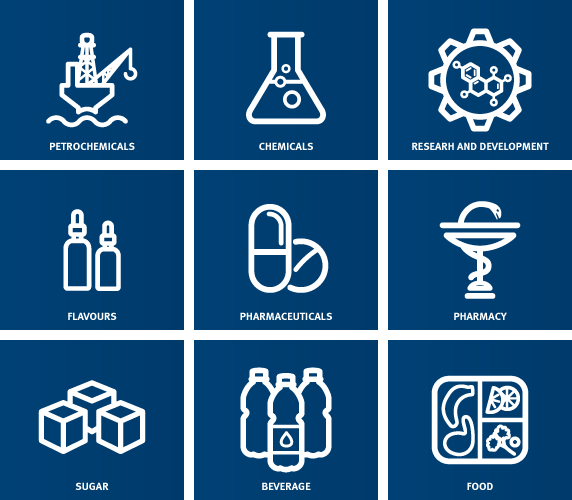
What is Refractometry?
Refractometry - a long journey from Plato to Ernst Abbe
It was the philosopher Plato who first described an observation which was important for the subsequent understanding of the refractive index and the associated refraction law. He observed that oars have a normal appearance in the air, while they appear to have a kink under the water.
The first specific representation of the refraction of light was developed by the Persian mathematician and physicist Ibn Sahl in the 10th century. In a treatise on burning mirrors and burning glasses, he investigated the refraction of light and through this work is considered to be the discoverer of the refraction law.
However, his findings fell into oblivion and were not taken up again until six centuries later. Subsequently, the professor Willebrord Snell van Royen formulated a new version of the refraction law in 1621. His findings on the refraction of light at the interface of two transparent media with a different refractive index paved the way for the invention of the refractometer.
It was Ernst Abbe who subsequently presented his refractometer to the scientific community in 1872. It was built at the company Carl Zeiss in Jena. Abbe used refractometers for the examination of balsam and resin as well as for the immersion liquid required in the production of microscopes. His invention is still used today in the fields of education, research, industry and pharmacy.
Digital refractometers are frequently used today. They use LED light sources, prisms and CCD sensors. Digital multi-wavelength refractometers enable measurements at different wavelengths.
Refractometry in nature
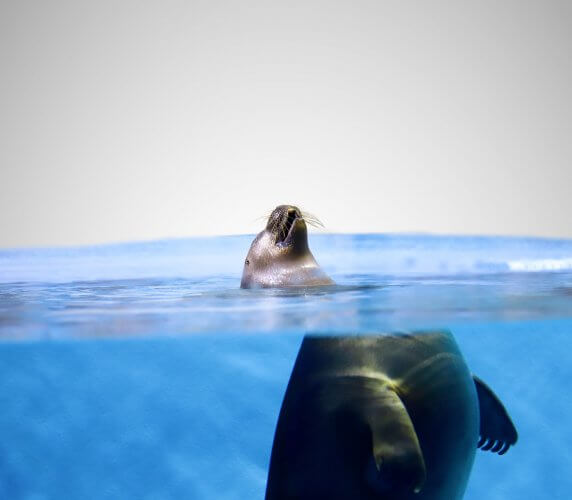
The refraction of light is evident in nature, e.g. on the water surface. Objects or animals, which are completely or partially underwater, may appear kinked, shortened or raised when they are viewed at the air-to-water interface.
The cause of these “illusions” is the refraction of the light on the interface of two media with a different refractive index.
Refractometers and total internal reflection
Refraction and the reflection of light usually occur when the light hits the interface of media with different refractive indices. From a certain angle of incidence, which is material-dependent, the light at the interface is no longer bent, but reflected instead. A total internal reflection of the light takes place. The refractive index is then determined using the critical angle, at which total internal reflection begins.
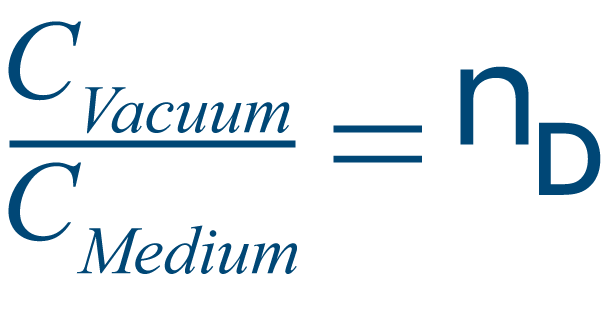
The refractive index nD is the value for the ratio of the speed of light in vacuum (C Vacuum) to the speed of light in a medium (C Medium). D in nD refers to the wavelength of the sodium D line at 589 nm. This is the standard wavelength for refractometers.
What is total internal reflection?
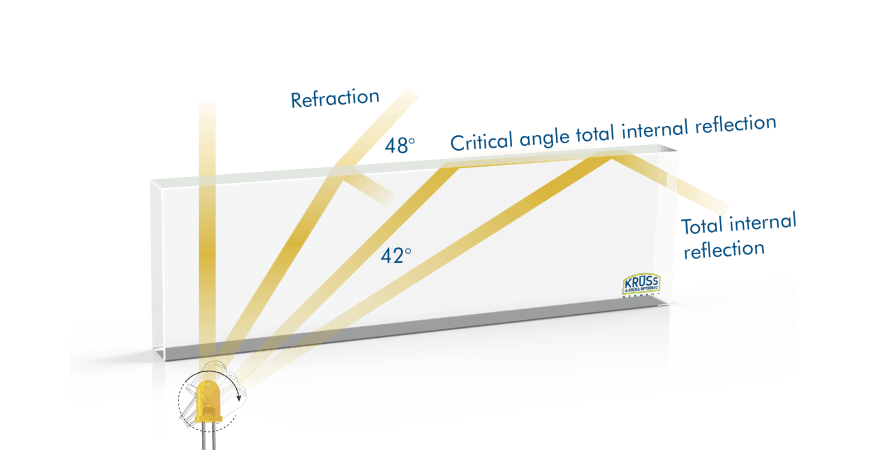
The critical angle of total internal reflection plays a decisive role in the measurement results of the refractometer.
Refractometers use the critical angle of total internal reflection to measure the refractive index of a sample. With acrylic glass the critical angle of total internal reflection is 42°, resulting in a refractive index of
1.49 nD, when measured at 20°C.
Which law applies to total internal reflection?
Snell’s Law describes the formula behind the refraction. The following applies: If the angle of incidence of the light (sin Θ T) and the refractive index (n1) of a medium (prism), are known, and total internal reflection occurs (sin 90°), these values can be used in order to determine the unknown refractive index (n2) of the other medium (sample).
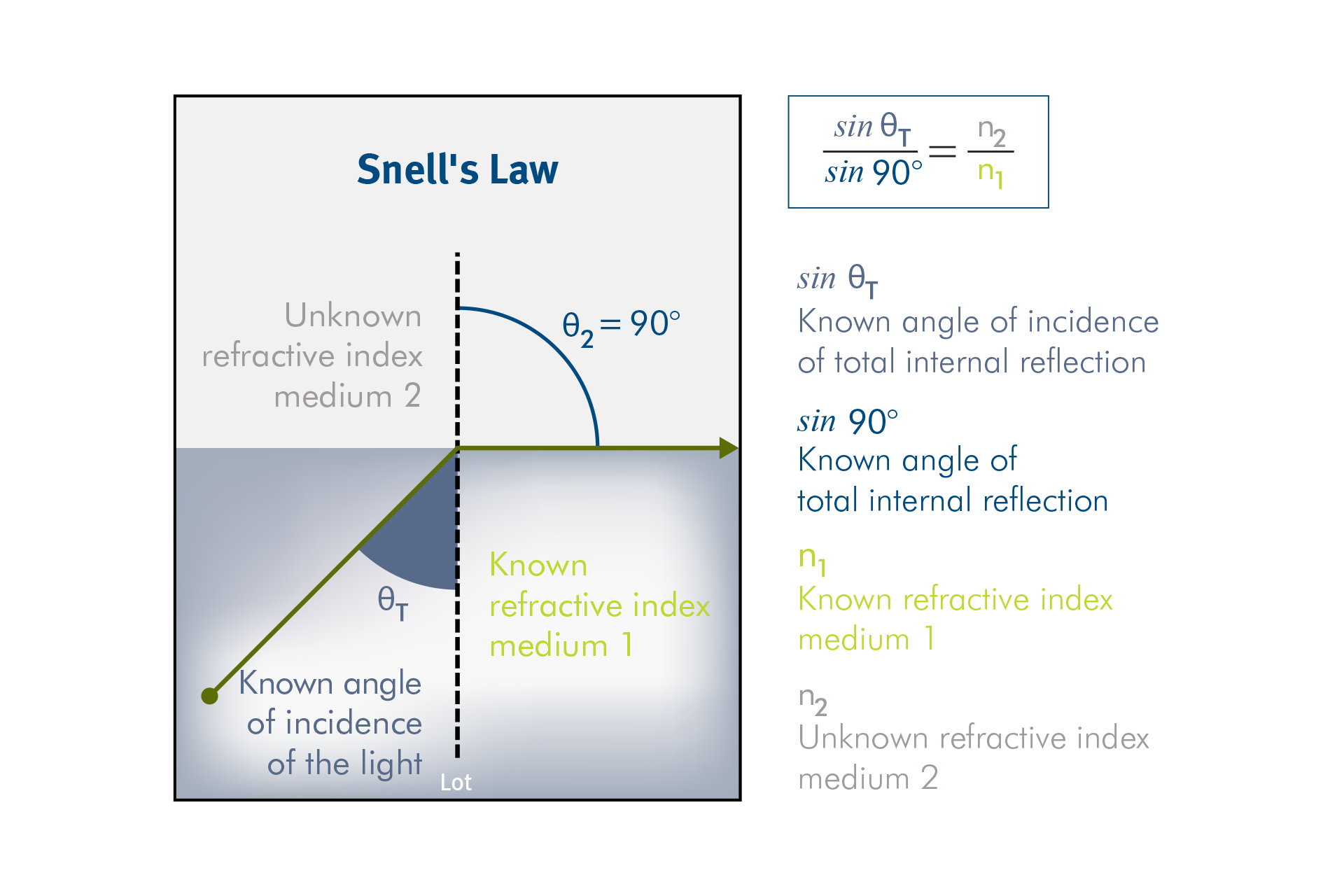
Why is light refracted?
Light does not always move at the same speed. The speed of light depends on the medium in which it spreads out. The higher the refractive index of a medium, the lower the light’s speed. The refraction of light occurs on the interface when a light beam travels from one medium to another and these media have different refractive indices.
Refraction of light illustrated by the example of media air | water

If a cup containing air (refractive index nD 1.0003) is filled with water (refractive index nD 1.3330), the content is more visible due to the refraction of light.
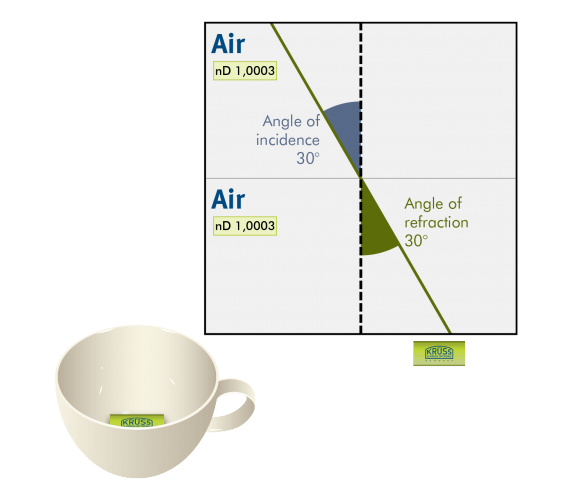
The measurement of the refractive index depends on the temperature of the medium and the wavelength of the light used.
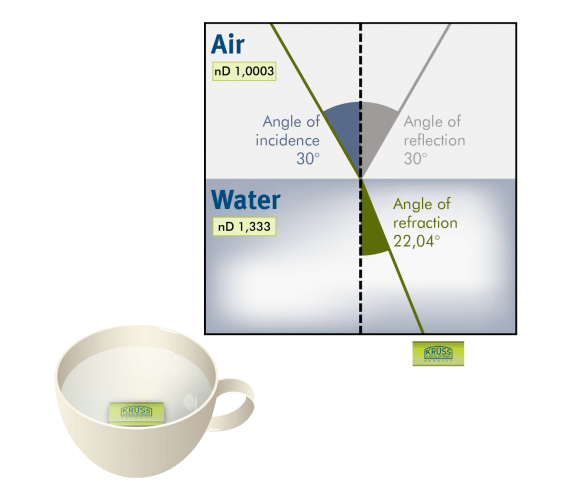
The refractive index values provided here are measured at 20°C.
What happens in detail?
When the light beam reaches the water surface, it is partially “transmitted” and partially “reflected”. This means that one part of the light beam continues to spread in the water and the other part of the light beam is reflected back into the air. The “transmitted” part changes its propagation direction on the “air-to-water” interface at the angle of refraction 22.04°. Therefore, the beam of light is refracted in a filled cup due to the water.
What purpose is served by measurement using a refractometer?
The refractometer determines the refractive index of liquid or solid substances from which their identity and quality as well as the concentration in binary (a mixture of two different components) or quasi-binary mixtures can be derived. For example, if sugar is added to pure water, the refractive index changes depending on the amount added. If salt is added to water, the refractive index also changes, but in a different ratio to the concentration. Consequently, if water does not have a refractive index of 1.3330 nD at 20°C, it is not pure water.
Measurement principle of the digital refractometer
Digital refractometers measure the critical angle of total internal reflection in reflection. The light source and photodetector are located on the same side of the sample. The light source, prism and photodetector are aligned with each other in a manner which means that total internal reflection occurs over the entire surface of the prism, provided there is no sample on the prism. If there is a sample on the prism, total internal reflection no longer takes place over the entire surface of the prism. Two examples measured at 20°C:

For a water sample on a sapphire prism, the critical angle of total internal reflection is 49°.
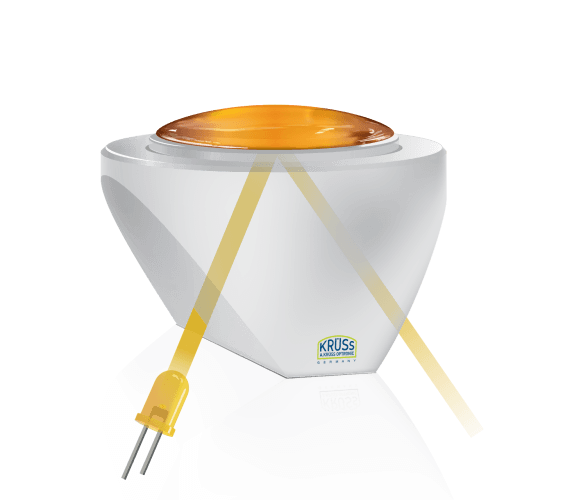
For a honey sample (water content 18%) the critical angle of total internal reflection is 57°.
An illuminated and an unilluminated area appear on the photodetector. The angle, from which the total internal reflection arises, noticeably separates the two areas, through which the refractive index can be determined.
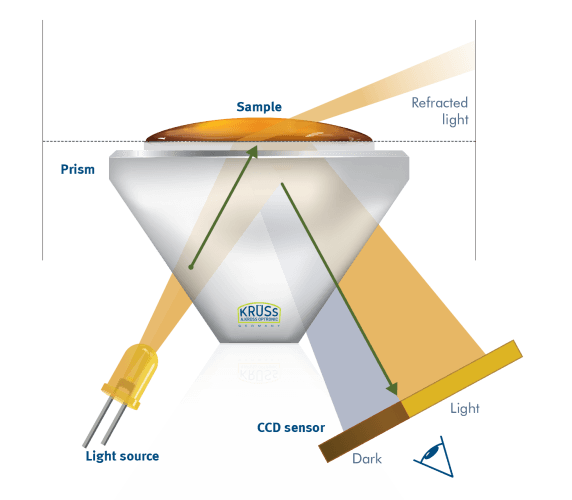
The refractive index provides information about the purity of a substance, but not its exact composition. In the case of honey the refraction of light depends on the water content. The higher the water content, the faster the speed of light in honey and the smaller the refractive index.
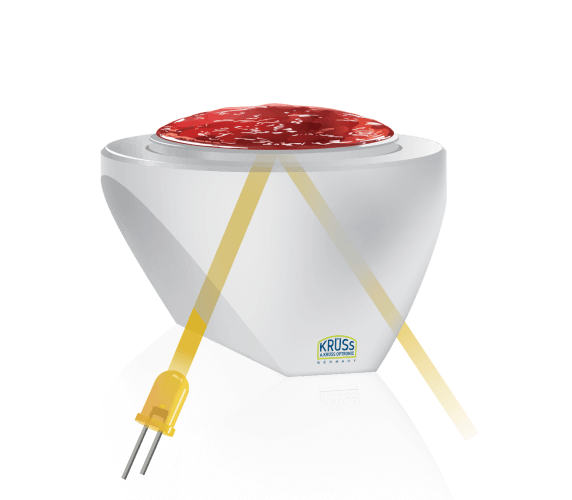
Digital refractometers work with reflected light, which means the light does not have to traverse the sample. As a result, the colour, texture or structure of the sample only has a small influence on the measurement. Even supposedly challenging samples such as jam can be measured with a digital refractometer.
The measurement principle of handheld and Abbe refractometers
Handheld refractometers and Abbe refractometers use transmitted light: The light beam goes through two right-angled prisms, an illumination prism and a measurement prism. Both prisms are made from glass with the same refractive index and are pressed against each other.
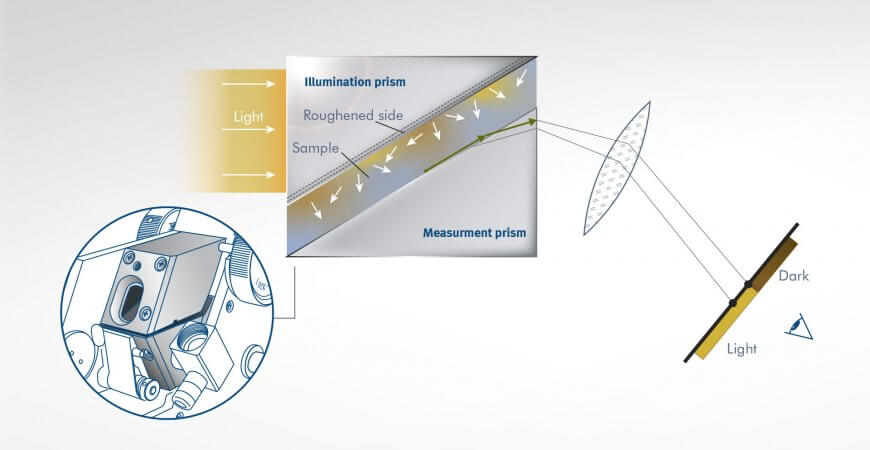
The sample is placed in the space between these two prisms. The inside of the illumination prism, which is in contact with the sample, is roughened. As a result, incident light in diffuse rays can penetrate the sample at all possible angles. At the interface “sample – measurement prism” these light rays are refracted and travel through the interface at different angles.
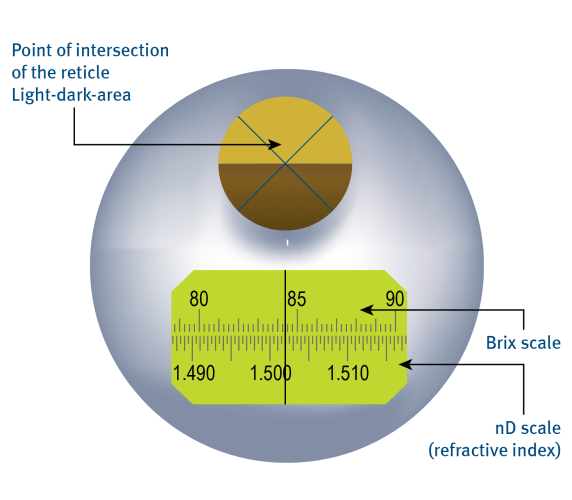
Only rays which radiate at an angle smaller than the critical angle of the total internal reflection pass through the measuring prism. This creates a light-dark area on a screen. The refractive index can be read on a running scale when adjusted to the cut-off line.
The Abbe refractometer has become widely used as it provides a simple and fast measurement of the refractive index. The operation of the device can be learned quickly.
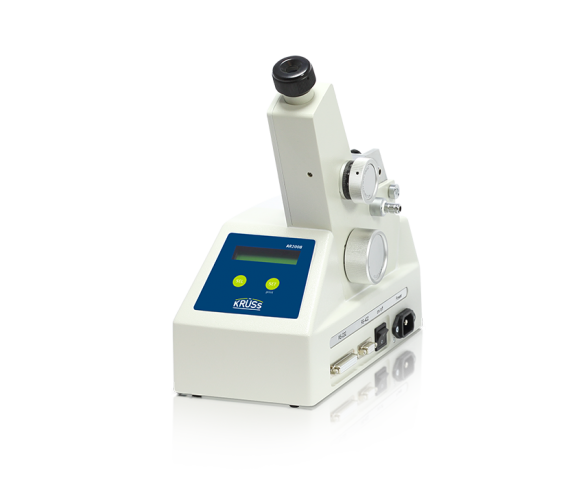
In addition to transmitted light, Abbe refractometers can also work in reflection. This means that Abbe refractometers are able to measure solids as well as liquid samples.
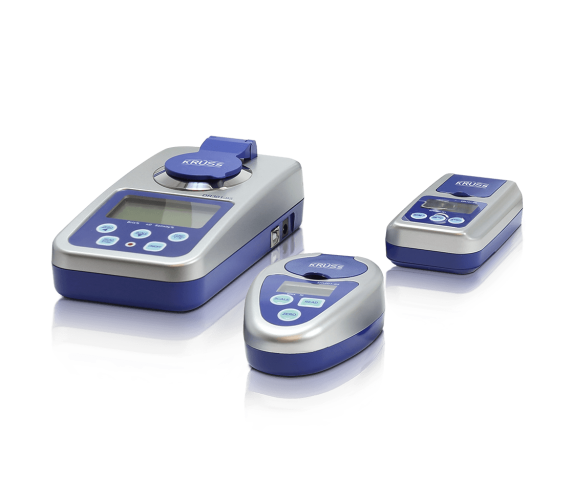
Handheld refractometers are popular due to their practical, handy and robust design. There are manual handheld refractometers in different versions with different scales.
